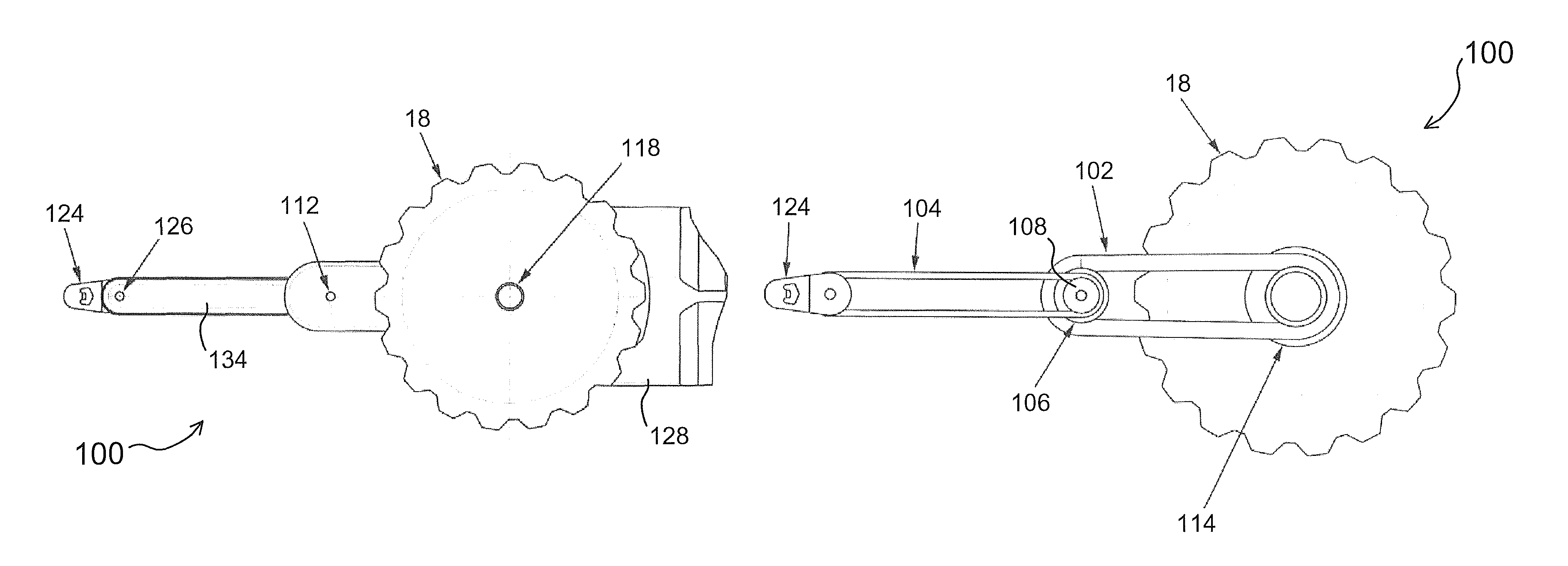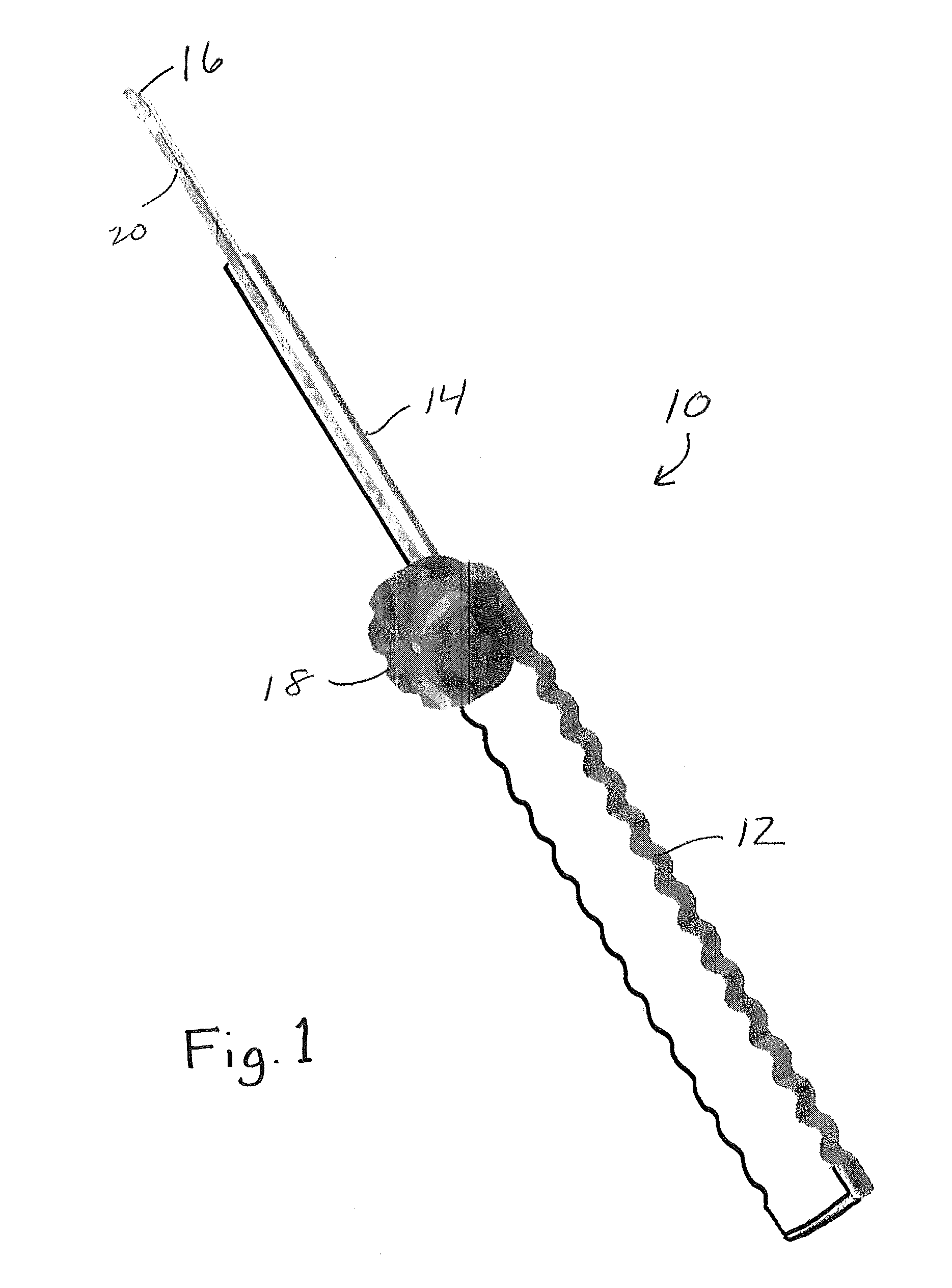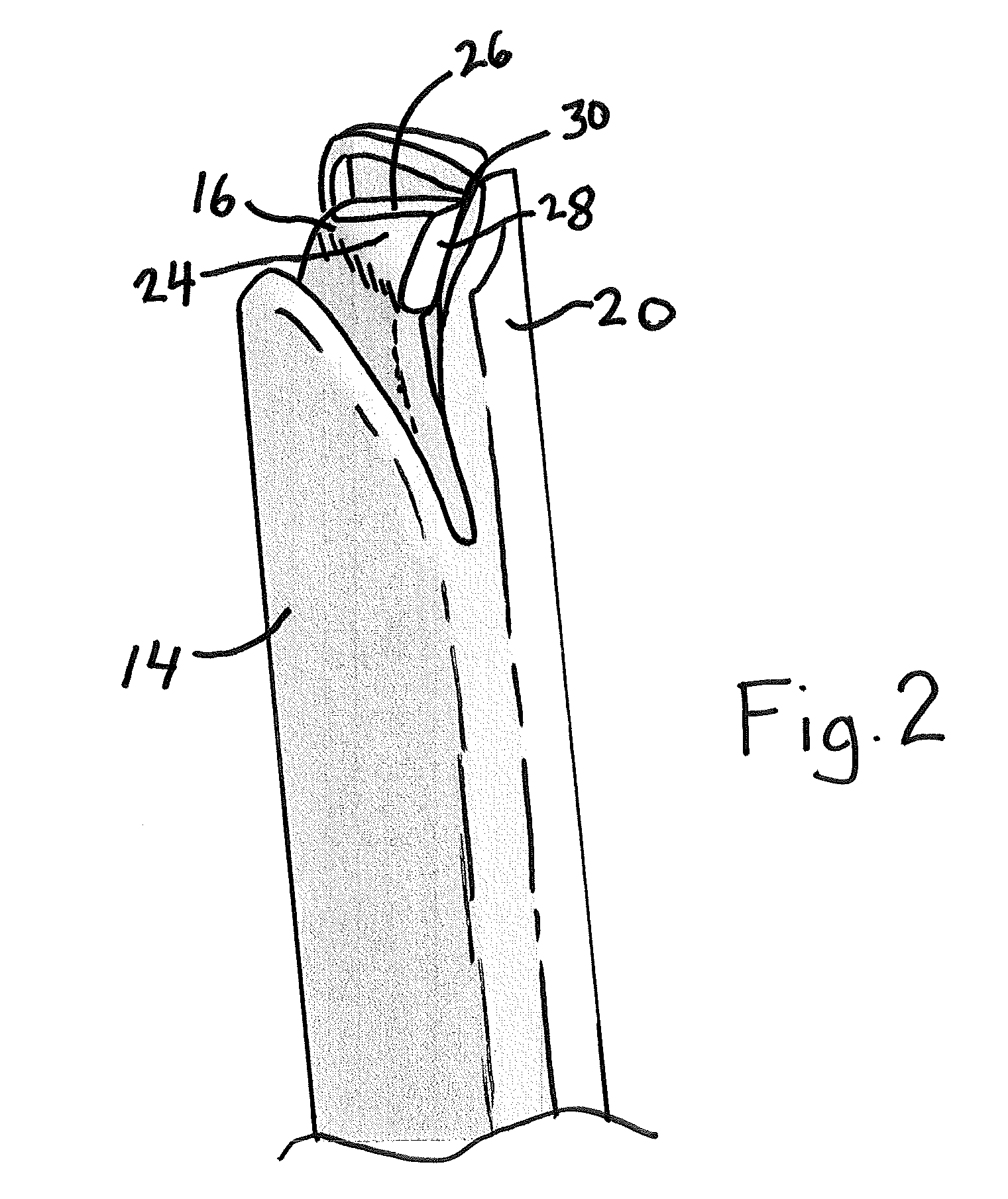Capsulotomy devices and methods
a capsulotomy and incision technology, applied in the field of instruments and methods for creating incisions, can solve the problems of reducing the transparency of the lens, and affecting the vision of patients, so as to improve the capsulotomy
- Summary
- Abstract
- Description
- Claims
- Application Information
AI Technical Summary
Benefits of technology
Problems solved by technology
Method used
Image
Examples
Embodiment Construction
[0051]Reference will now be made to the drawings wherein like reference numerals identify similar structural features or aspects of the subject invention. For purposes of explanation and illustration, and not limitation, a partial view of an exemplary embodiment of an instrument in accordance with the invention is shown in FIG. 1 and is designated generally by reference character 10. Other embodiments of instruments in accordance with the invention, or aspects thereof, are provided in FIGS. 2-23, as will be described. The system of the invention can be used for capsulotomies and the like.
[0052]Referring now to FIG. 1, instrument 10 includes of a handle 12 and a distal shaft 14 that holds a blade or cutter 16. There is a knob 18 on the handle that activates the rotation of the cutter 16. As shown in FIG. 2, there is also a shroud 20 that covers the cutting edge of the cutter 16 to ensure safe insertion and withdrawal.
[0053]Referring now to FIG. 3, a pliable body 22, which can be a st...
PUM
 Login to View More
Login to View More Abstract
Description
Claims
Application Information
 Login to View More
Login to View More - R&D
- Intellectual Property
- Life Sciences
- Materials
- Tech Scout
- Unparalleled Data Quality
- Higher Quality Content
- 60% Fewer Hallucinations
Browse by: Latest US Patents, China's latest patents, Technical Efficacy Thesaurus, Application Domain, Technology Topic, Popular Technical Reports.
© 2025 PatSnap. All rights reserved.Legal|Privacy policy|Modern Slavery Act Transparency Statement|Sitemap|About US| Contact US: help@patsnap.com



